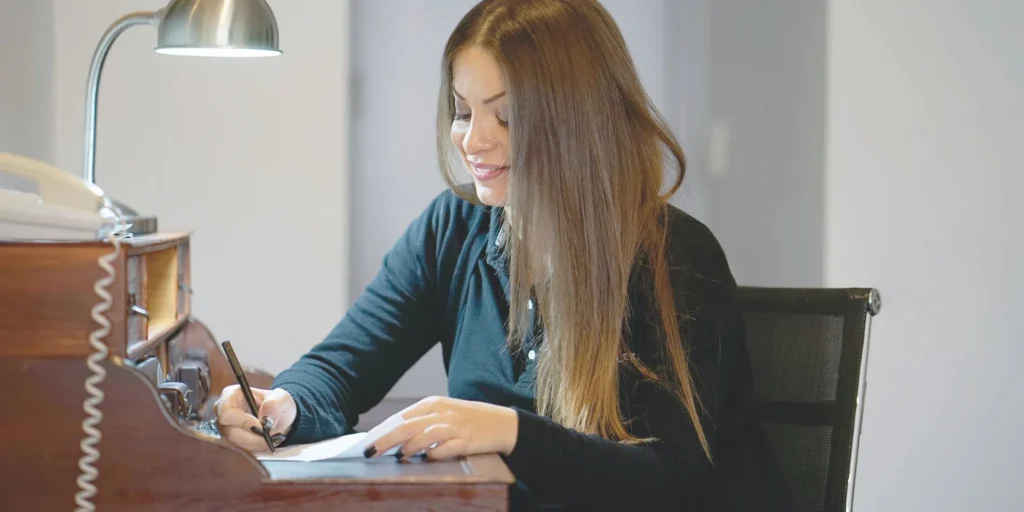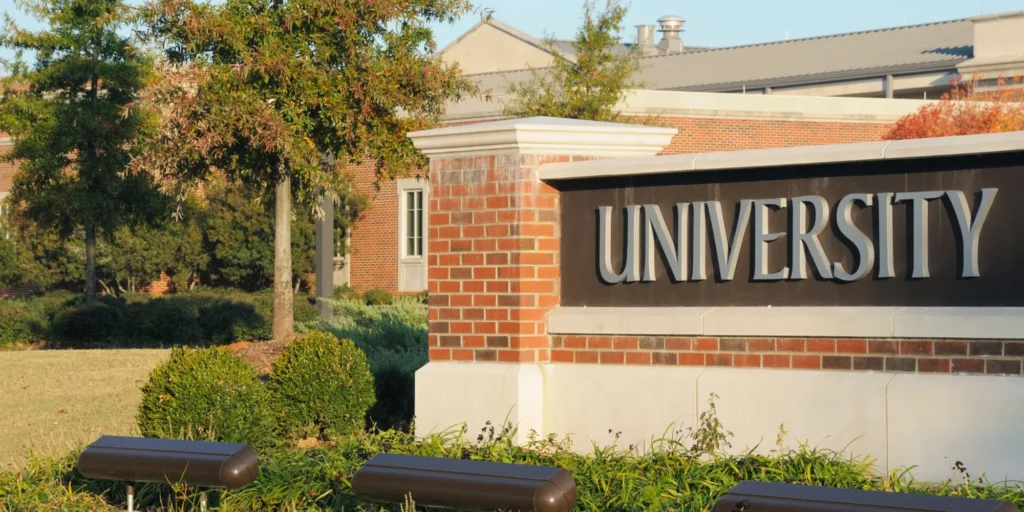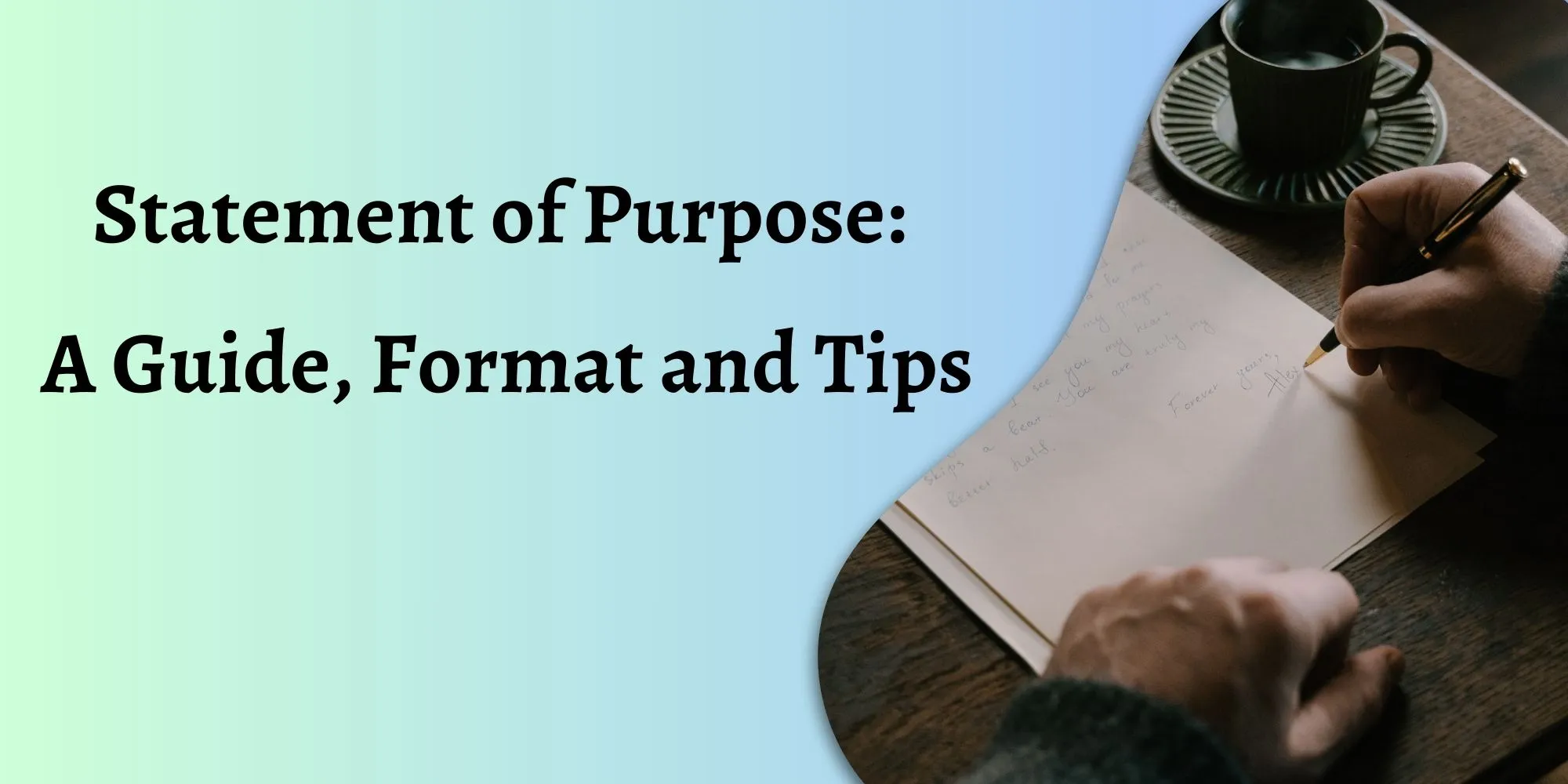When you apply for a student visa, immigration officers want to be certain that you’re truly qualified for higher education in Australia. One crucial tool to demonstrate this is the Statement of Purpose (SOP).
Basically, your SOP communicates that your purpose is education – not prolonged stay in Australia.
It shows insights into your personal and academic background, as well as your financial capability and your genuine intent to return to your home country upon completing your education.
In this guide, we’ll dive further into what an SOP is, its purpose, and tips on how to create an impactful SOP so you can achieve the student visa you seek.
Table of Contents:
- What is a Statement of Purpose?
- Why is a Statement of Purpose for a Student Visa important?
- Who needs a Statement of Purpose?
- Important details to include in your Statement of Purpose
- How do I write a good Statement of Purpose?
- How long should a Statement of Purpose be?
- Statement of Purpose (SOP) Example
- 10 Tips for Writing a Statement of Purpose that is Powerful and Convincing
- Tips on How to Write a Statement of Purpose for University Admission
- Don’t stress over the SOP details. Let KBA Global assist you today!
What is a Statement of Purpose?
A Statement of Purpose (SOP) is a letter that summarizes your academic accomplishments and motivations for choosing Australia as your study destination.
Along with your other Genuine Temporary Entrant (GTE) requirements, it shows visa officers your financial capacity, post-graduation intentions, and dedication to meeting the visa requirements.
Your SOP provides immigration authorities with a deeper insight into your academic history and your commitment to your educational and career goals, helping your chances of getting a visa to study in Australia.
Why is a Statement of Purpose for a Student Visa important?
1. It supports your Genuine Temporary Entrant (GTE) requirements
The GTE requirement is a mandatory requirement where you explain and show proof of your personal circumstances and motivations for studying in Australia.
When your SOP includes clear details about your academic qualifications and how well your goals align with your chosen program, it shows that you’re genuinely interested in and focused on your Australian education path.
This makes it more likely that immigration officers will grant you a visa.
2. It reflects your character
In a pool of highly-qualified applicants with impressive backgrounds, your character becomes a significant differentiator.
It provides immigration officers with deeper insights into your values and principles. It highlights the qualities that make you a valuable addition to the Australian education community.
3. It personalizes your application
Your SOP is an avenue for you to express your true desires and genuine passion for your chosen field and the institution.
Unlike objective criteria such as academic records and certifications, your SOP offers a subjective view of who you are as an individual.
It adds a human touch to impressive numbers and transcripts.
By sharing your thoughts on the Australian education system, you show your sincere dedication and enthusiasm to being part of it.
4. It demonstrates your English and communication skills
Your SOP highlights your ability to effectively communicate your thoughts and aspirations through writing.
This is important, especially for international students who often need to demonstrate the required level of English language proficiency.
Who needs a Statement of Purpose?
You need a Statement of Purpose for a Student Visa if you are an international student applying for the Student visa 500.
You may be looking to enroll in courses, degrees, or specialized programs in Australia, or pursue undergraduate, postgraduate, or doctoral programs.

Important details to include in your Statement of Purpose
Your Statement of Purpose must include important details such as the following:
- Personal and family background
- Financial status
- Academic background
- Professional experience
- Academic or professional gaps
- Motivation for pursuing studies in Australia
- Details of the course you’ll be attending
- Details of the university you’ll be attending
- Education or career plans and goals
- Details of how you’ll be funding your education.
- Living arrangements when you arrive in Australia
- Travel or immigration history (if any)
Later on, we will discuss in more detail what is required for each aspect above, including the format and structure of the SOP.
How do I write a good Statement of Purpose?
SOP writing structure
When writing a Statement of Purpose, it’s important to use a structured approach that allows your ideas to flow smoothly. Avoid clutter by structuring this way:
- Start with a Warm Introduction:
Begin your SOP by introducing yourself. Share your name and express your excitement about studying in Australia.
- Share Personal and Family Background:
Provide your personal information, including your name, age, and home country.
Briefly mention your family, including dependents if you have any. If you’re married, introduce your spouse, including their name, age, education, and job.
- Explain Your Financial Situation:
Discuss your family’s income and jobs. Describe your assets, like investments, property, and vehicles, and any debts, such as mortgages.
- Highlight Your Academic Journey:
Talk about your education, starting with your high school and college grades. Mention any awards, achievements, and extracurricular activities.
Also, don’t forget to mention your level of English proficiency.
- Show Your Work Experience:
Describe your work history, including any jobs in Australia (if any). Highlight significant projects, achievements, and awards.
- Explain Any Gaps in Your Education or Career:
If there are any gaps in your education or career, provide reasons. Explain periods of unemployment or time spent on non-career activities.
- Share Your Reasons for Choosing Australia:
Tell why you’ve chosen Australia for your studies. Explain why you’re not pursuing your studies in your home country.
- Detail Your Chosen Course:
Specify the course you plan to take in Australia, along with key details like fees, content, and duration. Explain why you chose it, especially if it’s different from your background.
- Explain Your University Choice:
Mention the university or school you intend to attend and why you picked it over others.
- Outline Your Education or Career Plans and Goals:
Explain how you’ll use your education back in your home country. Talk about potential jobs, employers, roles, and expected salaries.
If you plan to start a business instead, provide a brief business plan.
- Describe how you’ll fund your studies:
Specify whether you have a sponsor or if you’re funding your own studies.
Then, offer a detailed breakdown of your financial situation, including bank account balances, assets, and income sources. Attach documents as proof.
Remember, this step is essential for your application. Visa officers need to ensure you’re aware of the cost of living in Australia, and that you have enough funds to cover it.
- Describe Your Living Arrangements:
Share where you plan to live in Australia and who you’ll live with, like a spouse, family, or friends.
Additionally, mention any job prospects if you plan to work in Australia.
- Highlight Ties to Your Home Country:
Describe your personal circumstances and why it’s essential for you to go back to your home country after finishing your studies.
You can talk about your family ties or particular obligations you have in your home country that make it probable you won’t remain in Australia.
- Discuss Your Travel History (if any):
Talk about your past travels to Australia and other countries. List previous visa applications and explain if you’ve had any visa denials.
- Confirm Understanding of Visa Conditions:
State that you understand Australian visa conditions and commit to following them. Mention any future visa plans, for example, a work visa, if you intend to gain professional experience in Australia.
- Conclude with Gratitude:
End your SOP by expressing gratitude and signing your full name.
Format for SOP
The statement of purpose format is quite similar to writing a formal letter. Make sure to follow these formatting guidelines:
- Font style: Use clear and legible fonts such as Times New Roman, Arial or Calibri. Maintain consistency throughout the document.
- Font size: Use 10-12 pt for text body, and slightly increase the font size for headings to distinguish sections.
- Spacing: Use 1.5 or double spacing to enhance readability
How long should a Statement of Purpose be?
Your Statement of Purpose should be around 1000 to 1500 words, with a maximum of 3 pages.
Always keep in mind that your application is just one of the hundreds of applications that the immigration authorities have to evaluate. So, it’s wise to stick with the recommended word count.
However, you’re free to adjust the structure to better suit your situation and make your SOP more compelling.

Statement of Purpose (SOP) Example
This Statement of Purpose sample illustrates how to structure your SOP and incorporate the essential elements we discussed.
| Dear Sir/Madam, I hope this letter finds you in good health and high spirits. I am writing to express my heartfelt gratitude for considering my application for a student visa to Australia. My name is Maria Santos, and I hail from the vibrant and culturally rich nation of the Philippines. It is with great enthusiasm that I share my aspirations and intentions, as well as my profound ties to my home country, which continue to drive my pursuit of higher education in Australia. Ever since I completed my secondary education in Manila and embarked on my academic journey, I have nurtured a deep-seated passion for environmental science. This passion was fueled by the breathtaking natural landscapes of the Philippines, as well as the pressing environmental challenges our country faces. It has always been my dream to contribute to the conservation and sustainable development of our environment, and this dream has led me to make the crucial decision to pursue a Master’s degree in Environmental Management in Australia. Educational Background and Motivation I completed my Bachelor of Science in Environmental Science at the University of the Philippines, Diliman. During my undergraduate years, I was fortunate to be exposed to various facets of environmental science, including biodiversity conservation, climate change mitigation, and sustainable resource management. I graduated with distinction, which solidified my commitment to the field. My choice to pursue a Master’s degree in Environmental Management at the University of Sydney is a testament to my determination to enhance my knowledge and skills in this area. I believe that this program’s interdisciplinary approach, combined with its emphasis on practical skills and research, will equip me to address the complex environmental issues we face in my country, as well as globally. Academic and Professional Achievements During my undergraduate studies, I had the privilege of participating in research projects focusing on local biodiversity, which included conducting field surveys, conducting data analysis, and presenting findings at national conferences. I was also an active member of our university’s environmental advocacy group, where I engaged in community outreach and awareness programs. After completing my Bachelor’s degree, I worked as a Research Assistant at the Institute of Environmental Science and Meteorology (IESM), where I contributed to projects related to water quality assessment and urban green space planning. This professional experience broadened my perspective and deepened my understanding of the practical applications of environmental science. Why Australia? While I hold my country’s educational system in high regard, I believe that pursuing my Master’s degree in Australia will provide me with unique advantages. Firstly, Australia is renowned for its world-class education system and cutting-edge research facilities. The University of Sydney, in particular, has an impressive track record in the field of environmental studies, with a faculty composed of distinguished scholars and researchers. I believe that I will be exposed to novel systems and approaches that I can adapt to address persistent environmental challenges in my home country. Secondly, Australia’s multicultural society and welcoming attitude towards international students will not only enrich my educational experience but also expose me to a diverse range of perspectives and cultures. This global exposure is invaluable in addressing today’s complex environmental challenges, which often transcend borders. Why the University of Sydney? The University of Sydney’s Master of Environmental Management (MEM) program aligns perfectly with my academic and career goals. This program’s comprehensive curriculum covers essential topics such as environmental policy and governance, sustainable development, and natural resource management. Additionally, the university’s strong emphasis on research and hands-on experience through fieldwork and practical projects will allow me to gain a deeper understanding of real-world environmental issues and solutions. The opportunity to collaborate with esteemed faculty members and fellow students who share my passion is something I eagerly anticipate. Financial Support and Plans I am fortunate to have the unwavering support of my family, who have diligently saved for my education. My parents, Jose and Elena Rodriguez, both dedicated public servants, have been my pillars of strength. My elder brother, Diego, is a successful environmental engineer, and he has also extended his financial support. In particular, they’ve kindly offered to take care of my tuition fees, yearly living costs, health insurance, and travel expenses. I’ve attached bank statements and asset details as proof that they can support my entire stay in Australia for my studies. Ties to the Philippines While I have a deep appreciation for Australia, I have no plans to settle there. My family, particularly my parents and brother, hold a significant place in my life. I am blessed to be part of such a close-knit family, and the thought of being separated from them is something I find difficult to contemplate. Moreover, I recently married my childhood sweetheart, Rafael Santos, earlier this year. He is a mechanical engineer, and he understands the importance of my educational journey. He has been my greatest supporter, and we share a dream of contributing to environmental conservation and sustainable development in the Philippines. Although being apart from my loved ones for an extended period will be challenging, I am determined to ensure that this endeavor is rewarding. Thus, after successfully finishing my studies, I plan to come back to the Philippines. Past Travel History My family’s vacation to Australia several years ago left an indelible mark on my heart. The beauty of the Australian landscape and the warmth of its people were simply captivating. Exploring the country’s unique flora and fauna was an experience that further ignited my passion for environmental conversation. I’ve always had a dream of coming back to Australia, and I’m hopeful that this dream will finally come true. Visa Conditions I am well aware of subclass 500 visa conditions that apply to international students in Australia. I understand that these conditions include, but are not limited to, the following: I will limit my work hours to a maximum of 40 hours per week while my course is in session. I will stay enrolled in my registered program and ensure my attendance meets the required standards throughout the course. I will retain my Overseas Student Health Cover (OSHC) for the entire duration of my stay. I will promptly notify my educational institution of my Australian address within 7 days of arrival and promptly update them if it changes. I want to assure you that I am committed to complying with these conditions throughout my stay in Australia. I am fully aware that my student visa is a privilege, and I will treat it with the utmost respect and responsibility. I fervently hope that my application aligns with all the eligibility criteria and requirements for an Australian student visa. It would be an honor to be a part of Australia’s academic community and contribute positively to its diverse and multicultural environment. |
10 Tips for Writing a Statement of Purpose that is Powerful and Convincing
Here are some practical tips to make your SOP truly stand out:
1. Be Authentic: Write the SOP yourself. Share your genuine motivations and experiences. Share personal anecdotes or experiences that shaped your ambitions.
2. Be Truthful. Tell your real-life story. This includes setbacks and any times when things didn’t go as planned, as these moments can showcase your resilience in overcoming challenges.
3. Be Specific: Give exact figures, mention names such as professors, and talk about real job prospects. Thorough research is key!
4. Be concise: Avoid excessive use of flowery words and filler material. Get to the point.
5. Express Enthusiasm: Convey your passion for the program and how it aligns with your goals.
6. Seek Feedback: Get input from teachers, mentors, or professional editors to refine your SOP.
7. Edit and Proofread: Carefully review your SOP for grammar and spelling errors. Incorporate suggestions and feedback into your SOP.
8. Avoid Plagiarizing: Never copy from other sources. Always write your SOP from scratch.
9. Steer Clear of Generic Statements: Refrain from using generic or vague statements that lack specificity.
10. Avoid Overconfidence: Maintain confidence without crossing into arrogance. Don’t exaggerate your achievements.

Tips on How to Write a Statement of Purpose for University Admission
Yes, there’s such a thing as an SOP for University…
A Statement of Purpose for University Admission is your letter of introduction to your dream university’s admissions committee.
It shares similarities with an SOP for a visa. However, the main focus here is on gaining admission to your desired university rather than obtaining a student visa.
It helps the admissions committee understand your educational and professional background. This includes why you want to join a specific university program, and why you’re an excellent candidate for the institution.
Here are some simple tips for creating your university’s Statement of Purpose:
- Focus on Your Academic and Professional Background: Emphasize academic and professional achievements relevant to your chosen course. Show how your background has prepared you for success in your future academic endeavors.
- Explain Your Fit: Clearly articulate why you are the best fit for the university and the specific program you are applying to. Discuss how your skills, interests, and goals align with the institution’s values and offerings.
- Tailor to the Course and University: Don’t use the same SOP for every application; Make each one fit the course and university you’re applying to. Say what draws you to that program and how it fits your goals.
- Follow University Guidelines: Different universities may have specific requirements or formats for SOPs. Make sure your SOP follows these guidelines, as it demonstrates your attention to detail and commitment to the institution.
- Address Gaps Truthfully: If you have gaps in your academic or professional history, address them honestly. Explain the reasons behind these gaps and how they contributed to your personal and professional growth.
Don’t stress over the SOP details. Let KBA Global assist you today!
Your Statement of Purpose is your chance to shine in your student visa application. So, it’s important to ensure the details are sorted out perfectly.
With the help of experienced professionals who possess a keen understanding of the intricacies and potential pitfalls, you can create a strong SOP that meets all criteria and makes a compelling case for your educational journey.
So, don’t let the SOP stress hold you back from your dream of studying in Australia. Book a call with our experienced professionals today!

